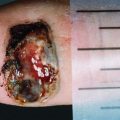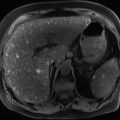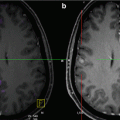Essential features
Ulceration
Present/absent
Breslow thickness
In millimetres
Margin status
Both in situ and invasive components
Mitotic count
Per mm2
Lymph node status
• Number of sentinel nodes received
• Number of positive sentinel nodes
• Number of nodes received
• Number of positive nodes
Level of invasion (Clark)
I—Confined to epidermis (melanoma in situ)
II—Melanoma cells invade but do not fill papillary dermis
III—Melanoma cells fill and expand the papillary dermis
IV—Melanoma cells infiltrate the reticular dermis
V—Melanoma cells invade subcutis
Table 2.2
Recommended other details from a synoptic report on melanoma
Other features | |
|---|---|
Tumour-infiltrating lymphocytes | No single system universally in use. System should refer to density and location |
Tumour regression | Present/absent. Also should be noted if this extends to margin |
Associated melanocytic lesion | An adjacent melanocytic lesion should be recorded |
Melanoma subtype | • Superficial spreading melanoma • Nodular melanoma • Lentigo maligna melanoma • Acral lentiginous melanoma • Desmoplastic melanoma • Melanoma arising from blue naevus • Melanoma arising in a giant congenital naevus • Melanoma of childhood • Naevoid melanoma • Melanoma not otherwise classified |
Satellite lesions | Present/absent |
Lymphovascular invasion | Present/absent |
Desmoplastic melanoma component | Present/absent. If present, necessary to determine if melanoma is a ‘pure’ desmoplastic melanoma or ‘mixed’ desmoplastic melanoma. There is improved disease-free survival with pure DM. |
Neurotropism | Present/absent |
Metastatic melanoma is one of the great mimics of histopathology and can resemble anaplastic carcinoma, sarcoma or even lymphoma. The use of immunohistochemical stains for melanoma antigens such as S100, Melan-A, HMB-45 and Sox10 is of assistance in identifying the lesion as a melanoma.
2.4 Molecular Analysis
The molecular pathology of melanoma has been an area of intense research activity and can be broadly divided into inherited mutations that confer increased susceptibility to melanoma and somatic alterations that occur in established tumours.
Approximately 10% of patients with a melanoma demonstrate a family history [3]. 20–40% of these families will have a mutation in CDKN2A, which is a locus that codes for two tumour suppressors (p16 and p14ARF) in separate overlapping reading frames. Mutations in CDK4 and BAP1 are also high-risk melanoma susceptibility loci.
Numerous studies have investigated recurrent somatic mutations in melanoma. Initial candidate screens identified somatic mutations in BRAF and NRAS as being common in cutaneous melanoma. BRAF, a serine-threonine kinase, is mutated in around 40% of melanomas and shows a mutational hotspot at codon 600, with BRAFV600E mutations (substitution of a valine for a glutamic acid) occurring in between 50 and 80% of BRAF mutated melanomas. Additional V600 mutations also occur (V600K, V600R, V600M) as well as mutations in codons 594, 597 and 601 (summarised in Table 2.3). Numerous studies have demonstrated that BRAFV600E has constitutive activity leading to increased signalling through the MAPK pathway with consequent effects a range of cellular properties, including differentiation, proliferation, survival and motility [4, 5]. Of note however, a larger proportion of melanocytic naevi (80%) harbour the same BRAF V600E mutations, demonstrating that this mutation is likely an early event during melanomagenesis, although not sufficient in and of itself [6].
Table 2.3




List of common BRAF somatic mutations in cutaneous melanoma along with proportion of cases
Stay updated, free articles. Join our Telegram channel

Full access? Get Clinical Tree








